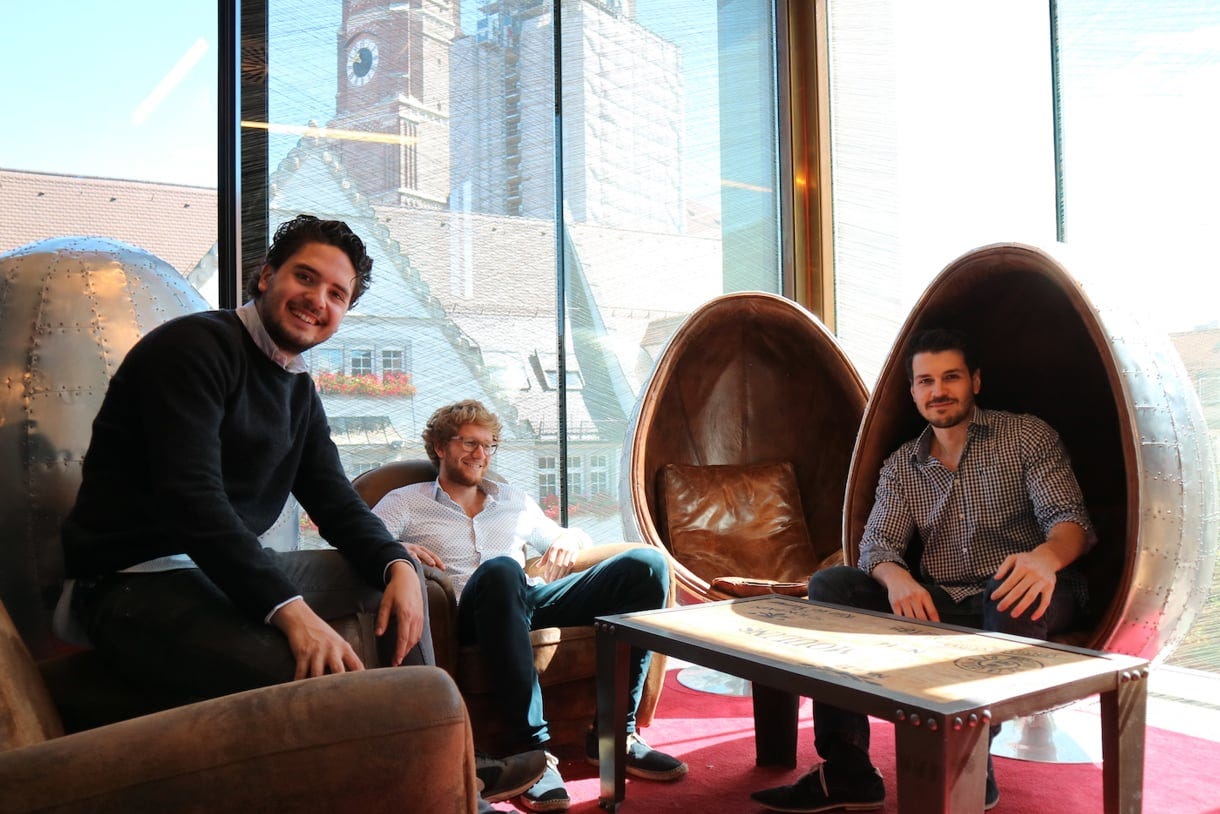How a random message got us the best CTO we could ask for
A story about instinct, drive, mistakes, and the one hire that changed everything
Dear readers,
After getting our consulting business off the ground, it was clear: we needed to build something scalable. A real product.
In this article, I’ll share how we found our CTO and everything that happened in between.
Happy reading!
Best, Xaver
PS: If you ever need hiring support, let me know as I coach a handful of selected clients each month.
Missed my last story? Catch up here.
My co-founder and I knew we needed to bring in a Chief Technology Officer (CTO). Someone who could build the technology from the ground up.
Up until that point, we had been selling workshops and were making some profit, which was great for a consulting business.
But our real ambition was to build a scalable software company with recurring revenue, not just one-off deals.
We needed someone who could not only build great software but also develop an AI engine strong enough to power our product.
The challenge: we had zero technical knowledge. No background in AI, no understanding of code, and no clue how to assess developers.
So we did what we could: we searched LinkedIn for “CTO” and “Developer,” and sent out hundreds of cold messages.
Since we didn’t know how to evaluate technical skills, we focused on personality during interviews. Our thinking was: if someone thinks like us, maybe they work like us too.
After a few weeks, we hired someone.
But it quickly became clear it was the wrong choice.
He was the opposite of us.
Unmotivated, full of excuses, and unwilling to work from our office. We considered letting him go, but before we could, he quit. It was frustrating. We had lost valuable months, and in our fast-moving environment, time was critical.
Still, in hindsight, we were lucky. Better to lose time than to be stuck with the wrong person.
We went back to square one.
This time, we tried Upwork. A platform where developers offer their services like a marketplace. Again, we couldn’t properly evaluate skills, so we filtered by something simple: the profile photo seemed “chill.”
One day, we messaged a developer asking if he’d be interested in building a business with us.
He replied immediately:
“Hi guys, sounds interesting. Want to meet up now? I’m near your office.”
We loved the energy. That was exactly the attitude we were looking for.
Thirty minutes later, he walked into our office. I still remember it clearly - super relaxed, wearing the same glasses I used to wear back then.
There was an instant connection. It just felt natural, like it was meant to be. I rarely have moments like that, but I knew immediately: this is our guy.
We made him an offer. He joined a week later. Part-time at first, since he was still working at another company. But we didn’t care. We just knew he was the right one.
And we were right.
He turned out to be one of the best developers you could ask for.
Not only could he write excellent code, but he also had the ability to learn fast. Within a few weeks, he had taught himself the fundamentals of AI. And even later, when our company had grown to 130 employees, he remained one of the strongest people on the team.
In hindsight, it was pure luck. We didn’t do a single reference call, had no way of assessing his past projects or code quality - we simply went with our gut.
It worked out this time, but gut feeling isn’t a scalable hiring strategy.
If you want to increase your chances of finding the right person, especially for critical roles, you need a more structured approach:
Run multiple interview rounds with different team members
Ask the right questions
Include a small test project or technical challenge
Always do reference checks with former colleagues or employers
These steps won’t guarantee success, but they significantly raise the probability of hiring someone who’s both capable and a strong long-term fit.
We worked day and night with our CTO.
Every single day, we showed up. Staying late, sometimes even crashing in the office.
He wasn’t just a hire.
He was one of us.
So we made him a co-founder.
One random Sunday afternoon, the CEO of Wayra walked in. He hadn’t expected anyone to be there. But it wasn’t a coincidence. No matter which day he came by, we were always there.
We were the only team working every single weekend.
When we first joined the program and received funding, we had the sense that no one really wanted us there. Too young. Too inexperienced. Too scrappy.
It felt like the only one who truly believed in us was the CEO himself.
But the energy shifted.
Slowly, people began to notice.
It wasn’t necessarily the product that caught their attention. It was the relentless effort behind it.
People started to notice how much we cared. How hard we pushed.
For the first time, we felt proud.
Proud that others began to recognize our drive.
Proud to be seen as one of the teams the investors believed in.
It felt like momentum.
But we knew we had to step it up. We needed more people: more developers, more hands, more speed.
And, truthfully, we needed a salary.
We had been crashing at our parents’ place for months.
Our first employee even slept there too because we couldn’t afford to pay him.
So we started our first investment round.
The round that almost broke us.
Go to next story here.



